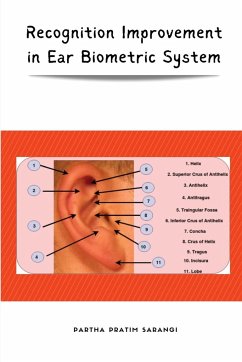Biometric systems have achieved a great deal of success for identity recognition of individuals in most of the civilian, law-enforcement, and forensic applications in recent years. The ever increasing popularity of biometric systems offer reliable identity recognition than traditional possession and knowledge based approaches, as biometric characteristics cannot be shared, forgotten, or lost. Biometric recognition operation refer to verification or identification of individuals based on physiological or behavioral characteristics such as fingerprint, palmprint, iris, face, ear, gait, signature, voice etc. Over last two decades, the ear has been predominantly attracted many researchers as an emerging biometric trait due to its encouraging features such as uniqueness, consistent shape, high acceptability, easy collectability, and passive biometrics. Despite of several inherent advantages of ear biometrics, issues in uncontrolled scenarios such as illumination variation, pose changes, poor contrast, partial occlusion, and presence of noise restrict to increase recognition performance. This opportunity gives sufficient chance for the recognition improvement in ear biometric system. This factor motivates us to investigate the potential of ear biometric characteristic with 2-D imagery. Objective of this thesis is to improve recognition performance of the ear based unimodal and multimodal biometric systems.








